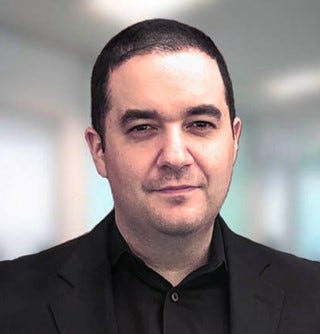3 Cybersecurity Myths to Bust3 Cybersecurity Myths to Bust
Deeply rooted cybersecurity misconceptions are poisoning our ability to understand and defend against attacks.

"Every lie is a poison; there are no harmless lies." Leo Tolstoy said this over 100 years ago, and who am I to argue with the great author? His observation holds as true today as ever — in many aspects in life, including cybersecurity.
I attend many cybersecurity presentations in my work, and one thing that has bothered me the past several years is the (over)use of clichés, myths, and misconceptions. There are many cybersecurity myths out there, but the three that are the most deeply rooted in the cybersecurity world (and therefore are the most "poisonous," as Tolstoy would say,) relate to People, Process, and Technology.
Myth #1: Sophisticated Threat Actors Use Sophisticated Tools
One misconception I run into a lot is the notion that sophisticated nation-state actors always use sophisticated cyberweapons when they breach organizations. While threat actors may indeed use zero-day exploits and advanced techniques to breach systems and access networks, in almost all cases, the initial vector is a (relatively) simple attack against humans. Why? Several reasons: a) it works, b) it's very cost-effective, and c) it's much harder to attribute. When attackers use an advanced capability like a zero-day exploit, they have a higher risk of being attributed to the attack. After all, there are only so many organizations that can develop or purchase zero days.
On the other hand, a relatively simple attack against a person, using a combination of social engineering techniques and open source intelligence (OSINT) can yield devastating results. Some of the most notorious breaches started just like that: the RSA hack, the Sony hack, the Associated Press hack, the Target hack, the DNC hack … and the list goes on.
In 2018, Verizon estimated that 33% of all breaches start with a social engineering attack. This is a very conservative estimate. Some researchers estimate the number to be closer to 90%. While security vendors push for more products, we must remember that not all cybersecurity gaps are technological. Most are related to people.
Myth #2: Attackers Need to Be Right Only Once; Defenders Must Be Right All the Time
I probably hear this process-related misconception the most. Claiming that an attacker needs to be right only once oversimplifies an attack life cycle from the point-solution vendor's point of view. In actuality, the attacker has to be right many times, and the defender has many opportunities to detect, mitigate, or prevent the attack.
To illustrate this, I suggest looking at the MITRE ATT&CK framework. For virtually any threat actor or attack type, the ATT&CK Navigator shows multiple techniques that can be used as part of the 14 tactics. Pick, for example, REvil ransomware. Notice how many different actions the attacker takes from Initial Access to Impact. The attackers don't have to be right once; they have to be right many times. The defenders will remain unaware of the attack if they miss all these opportunities to detect it.
True, the attackers likely will not give up if one technique fails or is stopped, and sophisticated threat actors are nearly impossible to stop. However, there is a lot to be said about early detection, attack mitigation, and incident response time. Saying that the attacker needs to be right only once is an easy out. We can do better than that if we break the siloed view.
Myth #3: You Need More Security Products to Stop All the New Threats
In terms of technology, we are learning the hard way that less is more. (Why not use a cliché to refute a cliché?) The average organization has 50 to 80 security products, yet most of them don't communicate with each other, some are partially integrated, and together they create huge management and monitoring burdens on security teams. Analysts and researchers suffer from alert and monitor fatigue, and there are good reasons practitioners in all disciplines are looking for easy-to-use, converged systems.
Vendor overload is directly related to the People and Process myths above. More chief information security officers (CISOs) are looking to cut back on the number of solutions they have while maintaining their security capabilities and operational readiness. This can be backtracked to the layered-security approach: The notion is true; you do need multiple layers for defense. Yet this does NOT mean you need more and more disparate systems to achieve it! The number of systems that analysts need to work with has become a burden. We don't need more tech — we need smarter, easier-to-use tech. We need to develop muscle, not fat.
It's Time to Bust These Myths for Good
To sum things up, we have to acknowledge these misconceptions about cybersecurity. If you read reports from almost 20 years ago, you will see the same problems and issues. Now is a great time to turn things around and bust these myths forever.
The adoption of cloud architectures gives us an opportunity to change the way we think and approach cybersecurity challenges. We can take these myths and put them behind us. As another great thinker, Albert Einstein, said, "The measure of intelligence is the ability to change."
About the Author
You May Also Like



_Nils_Ackermann_Alamy_Stock_Vector_.jpg?width=700&auto=webp&quality=80&disable=upscale)
